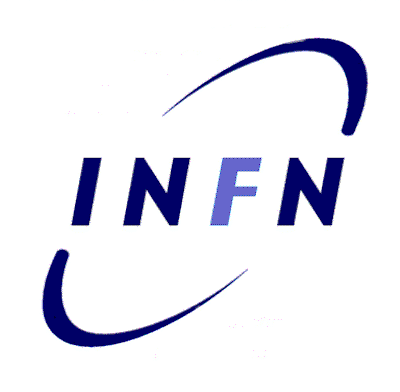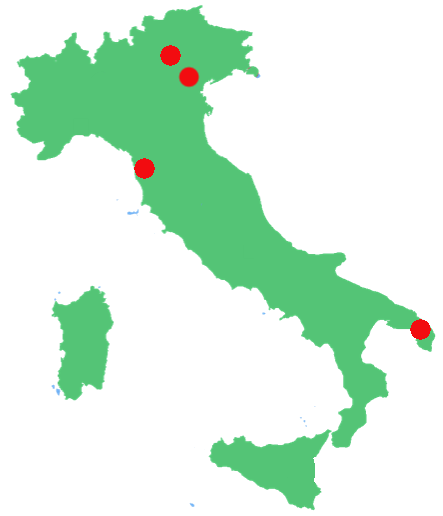FBS
Theory of Few Body Systems
Ab-initio studies of nuclear structure and nuclear reactions in light systems
Scientific activities of the various Research Units
Lecce
The Lecce unit focuses on using effective field theories to describe few-body systems. Chiral perturbation theory is used to compute the nuclear electroweak charge and current operators, and the parity-violating component of the nuclear interaction. The effective-theory paradigm is applied in other contexts too: the 3-nucleon interaction is modeled in pionless effective theory; a tailoring of such models to 3-nucleon scattering observables, where long-standing discrepancies between theory and experiment exist, is currently in progress. Recently the halo-effective theory is also being investigated. In this framework, as a starting point, the effective alpha-alpha interaction has been constructed up to N2LO of the low-energy expansion.Padova
The unit of Padova is currently focusing the attention to medium/light-nuclei scattering and reaction processes. The reason for this attention is due to the interest and consequences that these nuclear processes have for current researches on exotic nuclear structures, particularly at or beyond the driplines, for nuclear astrophysics, and last but not least for applicative nuclear data processing, such as nuclear medicine, nuclear power application, and nuclear waste management. The theoretical approach (called MCAS) describes the nuclear scattering and related processes starting from an effective nuclear cluster-like Hamiltonian which takes into account the soft (low-energy) correlations of the target/projectiles which are so fundamental in describing the nuclear-resonance phenomena that affect all these processes. The constructed cluster-like Hamiltonian is used to describe both nuclear structure and scattering, resonances of the compound system, and other nuclear processes such as radioactive capture. We currently use the approach we have developed few years ago, for neutron, proton, and alpha scattering/reaction on light nuclei. With this approach, we also made some very exotic resonance predictions on Radioactive Ion-Beam physics, that were later found experimentally (see for example http://www.interactions.org/cms/?pid=1028326 ).
The elastic cross-sections from scattering of radioactive 14O ions from hydrogen at angle 147◦ in the center of mass, using parameters tuned to reproduce the 15F ground state, not the cross section. Cross section data from V. Z. Goldberg, et al., Phys. Rev. C69 (2004) 031302(R) and resonance data from I. Mukha, et al., Phys. Rev. C82 (2010) 054315. Theoretical predictions of the narrow resonances with MCAS calculation were done originally in L. Canton, et al., Phys. Rev. Lett. 94 (2005) 122503. In this recent figure an analysis of mirror-symmetry corrections with respect to the case 15C was studied. The existence of such excited states of narrow width, for 15F, appears quite surprising, since its proton decay is well above the Coulomb barrier.
Pisa
The core of the research activity of the Pisa unit is the development of an ab-initio method (the so-called hyperspherical harmonics method) to solve the quantum mechanical problem for few-body nuclear and atomic systems, as the A=3,4 nuclear bound and scattering states (below breakup threshold). This has a series of significant applications: (i) test of the models for the nuclear potential, also those derived within chiral effective field theory; (ii) study of A=3 and 4 electromagnetic structures; (iii) study of A=3 and 4 radiative and weak capture reactions; (iv) accurate calculations of several parity violating observables in A=2-4 nuclear systems; (v) study of the Efimov effect both for boson and fermion systems.

|
Effect of the three-nucleon interaction in p-3He elastic scattering at low energies. The four-nucleon scattering observables (differential cross section and various kind of analyzing powers) are calculated using the hyperspherical harmonics technique and the results are compared with available experimental data at Ep=5.45 MeV. The light cyan bands are the results of the calculations obtained with different two-nucleon (pairwise) interactions, while the blue bands represent the results obtained including also a three-nucleon interaction derived from the chiral effective field theory. The width of the bands is a measure of the uncertainty of the theoretical results derived mainly from our not complete knowledge of the nuclear interaction. |
TIFPA - Trento
The Trento unit deals with ab initio solutions of the quantum mechanical problem for finite systems with a limited number of particles (nucleons or hyperons), focusing both on bound state properties and on reaction cross sections by perturbative probes. The Schroedinger equation for bound states is solved by diagonalization methods based on hyperspherical harmonics (HH) expansions,using realistic interactions (phenomenological or Chiral effective). Convergence is accelerated by similarity transformations that generate effective interactions (EIHH). Results on cross sections, also to continuum states, are obtained by the Lorentz Integral transform (LIT) method. By reducing the continuum problem to a bound state one, the LIT permits the use of the same methods mentioned above. More recently the LIT method has been formulated within the Coupled Cluster theory, allowing to extend applications to medium weight nuclei.

|
Example of calculation of the response function of 4He using the LIT method. |
^ Back to Top


